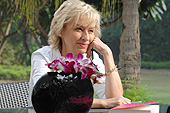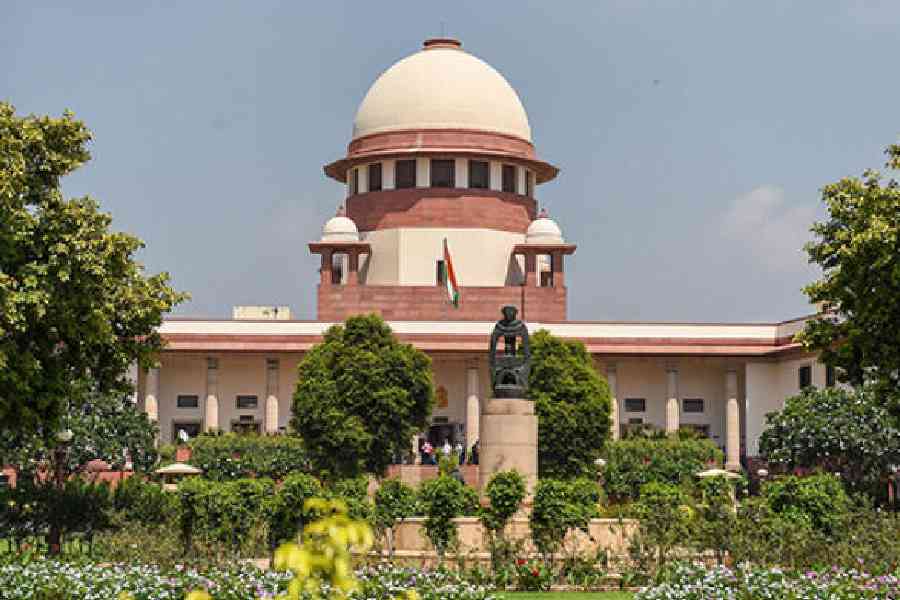 |
 |
 |
| CELEB STORIES: (From top) Tina Brown in Delhi, Princess Diana, and the famous Demi Moore cover of Vanity Fair |
She is a bit like Lady Di herself. Tall and svelte with highlighted blonde hair, Tina Brown faintly resembles the subject of her recent book. But then, in a black T-shirt dress, she is every bit as glamorous as those she has granted entry into the famed world of cultdom. “I am considered the inventor of celebrity journalism,” Tina Brown admits with a sheepish smile.
Not in the trite gossipy style of the desi Page 3s, but in in-depth investigative reporting, Brown has had a career most young people would only dream about.
At 25, she was the editor of Tatler. At 30, she left Britain for the United States to edit Vanity Fair — where, among other things, she convinced a pregnant Demi Moore to pose naked on the cover. At 38, she was the first woman editor of The New Yorker, a post she held from 1992 to 1998. Now, at 54, she is in Delhi, being interviewed at The Imperial, while her husband, the respected journalist Sir Harold Evans, prepares for a lecture.
Famously described as Joseph Stalin on high heels, Brown’s reputation is formidable. But successful in all her ventures, she finally had her first fall, much to the delight of her many detractors, when her magazine Talk failed over five years ago. “I didn’t think celebrity journalism would be a monster that would devour everything,” she says. “Just when I think it has peaked, it comes back. There is no privacy. People have their lives on Facebook. You really don’t need to be anyone much.”
But just as her critics were planning her obituary after Talk’s failure, she bounced right back — with her Diana book — to remind people that she couldn’t be written off. Diana Chronicles — a racy book about the life and times of Lady Diana, aptly with a hot pink cover — has helped keep the cult of the most loved royal alive and thriving even 10 years after her death.
“I wanted to do a social history of Diana’s time,” she says. “Since I worked at the Tatler then, I wanted to write about the England of 25 years ago. I wanted to see how women in aristocracy had changed from her mother to her grandmother.”
Diana, she feels, was the transition. “Diana was a modern girl who wanted love and an equal relationship. But she married into a rigid family. Diana met Charles only 13 times before she married him. It was as arranged as it gets,” says Brown.
An arranged marriage, a huge Windsor family and an “original Indian mother-in-law” in the Queen — Diana could have been “every Indian woman,” Brown admits with a laugh. “The royal family vacations were six weeks long. Imagine being stuck with your mother-in-law and all your relatives in a castle in Scotland with the rain and very little to do unless you enjoyed hunting.”
Of course, Brown adds, the situation could have been worse if she had married the Pakistani heart surgeon Hasnat Khan — the reported love of Diana’s life. “She could have been stuck in a compound with all her relatives in Karachi,” says Brown, who studied with Benazir Bhutto at Oxford.
“What I feel is tragic is that she was surrounded by a world of whispers where everyone was in on that her husband had a mistress. She could either fight back or go under.”
The book, though an international bestseller, is not without its share of criticism. Though branded as exploiting Diana, Brown’s book, launched earlier this year, looks at her not as a boring “goody goody” but like a “great literary heroine similar to Scarlett ’ Hara or Madame Bovary.”
“She drove you crazy, she was capricious, but I admired her reckless courage,” she says. Brown also believes Diana had a “fatal attraction” for the camera and would actually tip off reporters about her engagements. One such instance was the famous photograph of Diana kissing Dodi Al Fayed aboard his boat, the Jonikal.
“The trouble with Diana was she was a romantic. She wanted to be in love,” she says. Contrary to popular belief, Brown maintains that she had not found true love with Al Fayed. “Aboard the Jonikal, where she was supposed to be wrapped up in dreams of becoming Mrs Fayed, Diana was thinking of the future, appraising the CVs of suitors with better long-term prospects than the affable Dodi, who had to go cap in hand to his father for everything,” Brown writes in her book.
Diana may actually have become a good Indian bahu, instead of just having the trappings of a desi marriage in Britain. There was, in her life, Gulu Lalvani, a 58-year-old Hong-Kong based electronics entrepreneur who, as Brown’s book says, was considered her “crater of tranquillity”. Brown goes on to explain why: he had a cool disposition and a pitted complexion.
Diana was the archetypal poor little rich girl — who had wangled a £17 million settlement, a global superstar status, but had no one to love her. “It made her crazy that the whole world was in love with her, but Charles wasn’t. He was the dream that got away,” she says. “But it was Hasnat Khan who was her guy in many ways. He was not interested in the power or the money. She believed she could be the wife of a doctor. But she couldn’t. How could she?”
More realistic, Khan decided to shatter her dreams of a princess turning into an ordinary doctor’s wife. “He didn’t want the paparazzi outside his door every day.”
A month before she died, Diana had lunch with Brown and Ann Wintour, the editor-in-chief of Vogue, at the Four Seasons. “She told me that day: ‘Who would want to take me on? I have so much baggage.’ It was sad,” Brown says.
Unlike Diana who could never find love, Brown has been lucky. She fell in love with the legendary Sir Harold and married him at 22. “I may have not been so lucky if I had waited till I was 30,” she smiles as she rushes off to meet her husband.










